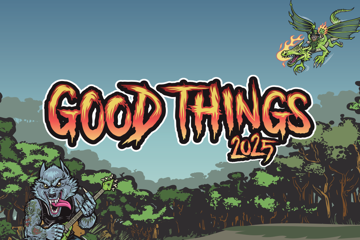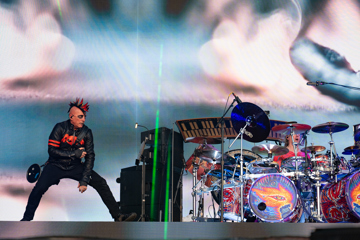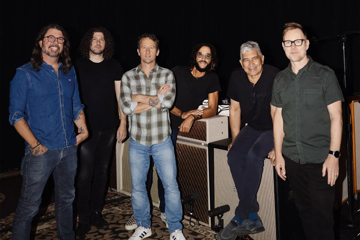Plastic Gold
“The great thing about Nuggets is that it was a moment in time that was as inspirational as any time in rock’n’roll."
he Nuggets: Original Artyfacts From The First Psychedelic Era: 1965-1968 compilation, put together by Patti Smith guitarist and some-time rock scribe Lenny Kaye in conjunction with Elektra Records founder Jac Holzman in 1972, is a collection of garage-rock obscurities from the '60s. Truth be known, the term garage-rock wasn't coined until well after these long lost treasures had been released. Forty years on, the set has been re-released. To celebrate, Warner Music has also put out a couple of companion albums. One is an Australian version of Lenny Kaye's original concept featuring obscure Australian psychedelic rock tunes from the same era by bands such as The Elois, The Five and The Throb, alongside more recognisable acts The Easybeats and The Masters Apprentices. The other is a recreation of Kaye's Nuggets record with the tracks re-recorded by a bunch of current Australian acts including Velociraptor, Davey Lane, Eagle & The Worm, Pond and many others.
Mick Hamilton's old band The Moods are included on the Australian originals compilation with a track titled Rum Drunk, one of only two singles the band ever released in the early '60s. Hamilton is as surprised as anyone to be speaking with the media about songs he recorded more than 40 years ago. “It's nice to be remembered and that people think you are relevant in some sort of way,” he says of the belated interest. “We only really released two singles. We did some other recordings but none of them ever saw the light of day. It was fairly common in those days. A lot of people recorded and disappeared without trace or the record companies decided it wasn't worth putting them out. We all had dreams of being the next Beatles or Rolling Stones. It took about five minutes for it to become apparent that wasn't going to happen. Once we got past those dreams of glory, I guess we just wanted a hit record and to have a good time.”
More than anything, what the Nuggets original compilations have in common is a sound and pioneering spirit. It's a sound which many bands today such as Tame Impala attempt to capture. Back in the day, the gear was basic and it was very much a case of experimentation when it came to recording. “I was using a Fender Strat and a Goldentone 40-watt amp,” recalls Hamiltion of his gear. “The lead guitarist was using a semi-acoustic Burns guitar through a 50-watt Vox. None of us have any of that stuff anymore,” he laments. “On the B-side of the track that is on the Nuggets album, I used tremolo on my amp to give a distinctive sound and I used my fingers instead of a pick in a quasi-flamenco style just to give it a different sound. Our other guitarist, John, had a treble boost. It wasn't even a pedal, it was a little box and he used that to overdrive the sound and make it distorted before there were even fuzz boxes. What we knew about recording in those days you could put on the back of a pin. We didn't have much to do with it. We'd just come in with the songs and perform them. We didn't have any say about what went on in the control booth. It was probably two-track, I can't remember. I don't think four-track came in until a couple of years later. What you hear was pretty much what was performed. There was very little messing around, a bit of echo maybe and that was it. We didn't know what we were doing. It was rudimentary and learning as we go. The bands, the press, everyone was learning on the spot. If I recorded that stuff today, I couldn't get that sound, wouldn't know how!”
A big part of the Nuggets 'sound' was its lack of focus on the bass – it was very treble-based. The main reason for this was that they didn't have the speaker technology to reproduce low bass frequencies.
Don't miss a beat with our FREE daily newsletter
“It was almost a concentrated effort on the part of the engineer not to get any bass on the record,” says Hamilton. “When I worked with Festival Records in Sydney, which was more corporate, they really went out of their way to pull the bass right out. They claimed it would distort on people's radios. At the time we did Rum Drunk, which is on Nuggets, at Armstrong Studios, they used to have a three- or four-inch speaker mounted on a piece of cardboard and they would play the mix through that to see what it sounded like – the reason being that it was the kind of quality people would be listening to. It really was a piece of speaker mounted on a carton, corrugated cardboard.”
Lenny Kaye is as surprised as anyone at the adulation he receives for his part in bringing these Nuggets to the fore. “I'm still getting free beers out of it!,” he told me in 2008. “The great thing about Nuggets is that it was a moment in time that was as inspirational as any time in rock'n'roll. To be honest, I hardly ever go uptown to New York to see the big international bands. I still like to go into the rock clubs to see who is doing what, to be at the grass roots of what's happening. It was a great moment in time. I mean, it was all over the place. Garage rock now is a very specific style and while there were many different components to it back then, what I really liked about it was that first thought, that first idea, that's what made it great.”
At 65 years old, Hamilton continues to play regularly today, backing artists such as Frankie J Holden and Wilbur Wilde, and he still records occasionally. Last year he recorded an album with friend Keith Glass in which they attempted capture that Nuggets-era sound. “We attempted a bit of a throwback to the '60s and '70s garage sound, almost psychedelic. We had a great time doing it and it sounds pretty good but it doesn't sound authentic. We tried, we really did! We had guys from that time and instruments from the era, we tried everything we could but it just sounds too slick. It's almost like you learn too much in the interim. There's a rudimentary roughness that you only get because you can't do it any better. If you try to play down to something and you are a better musician than you are trying to be, it is not going to work. In the old days we were stretching the limits to be the best we could possibly be, which wasn't very good and consequently made it sound great.”







